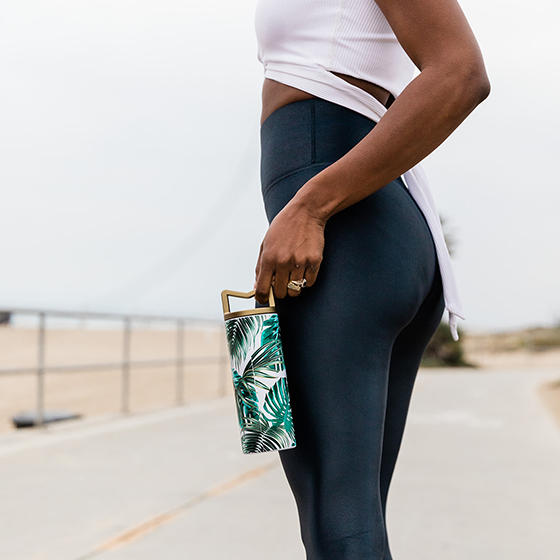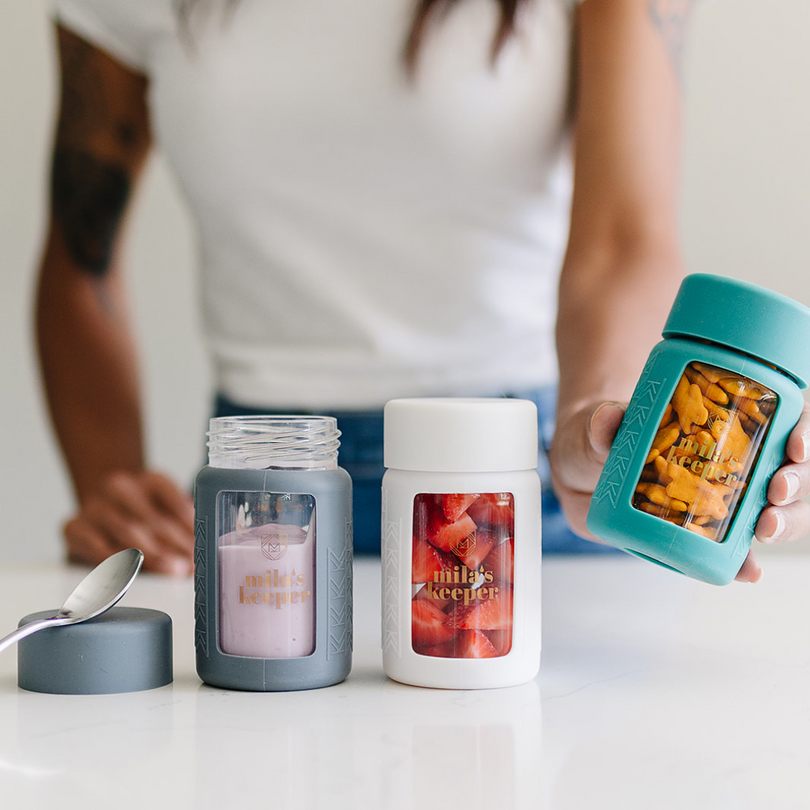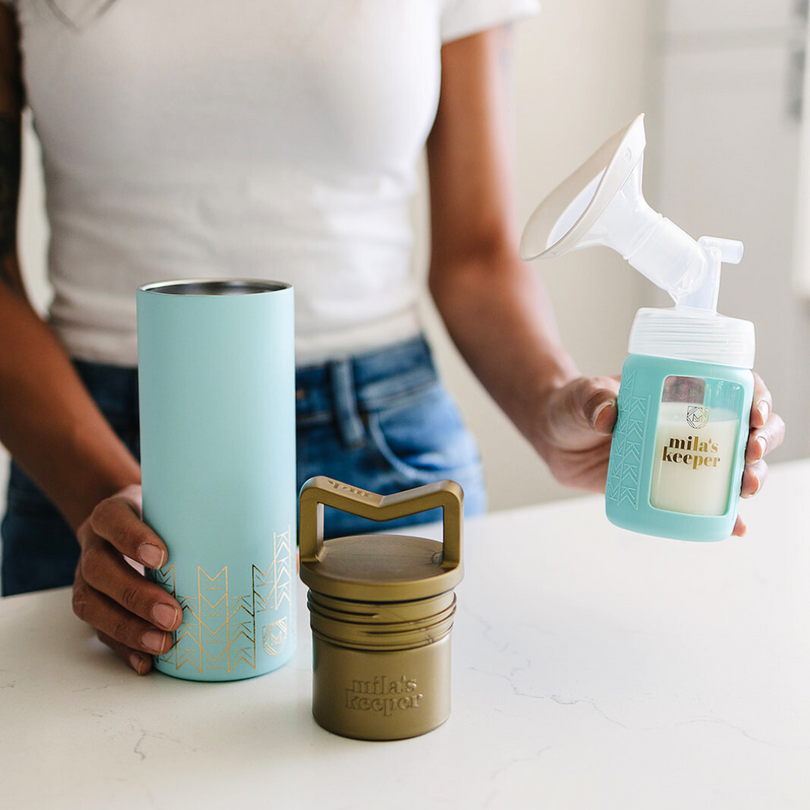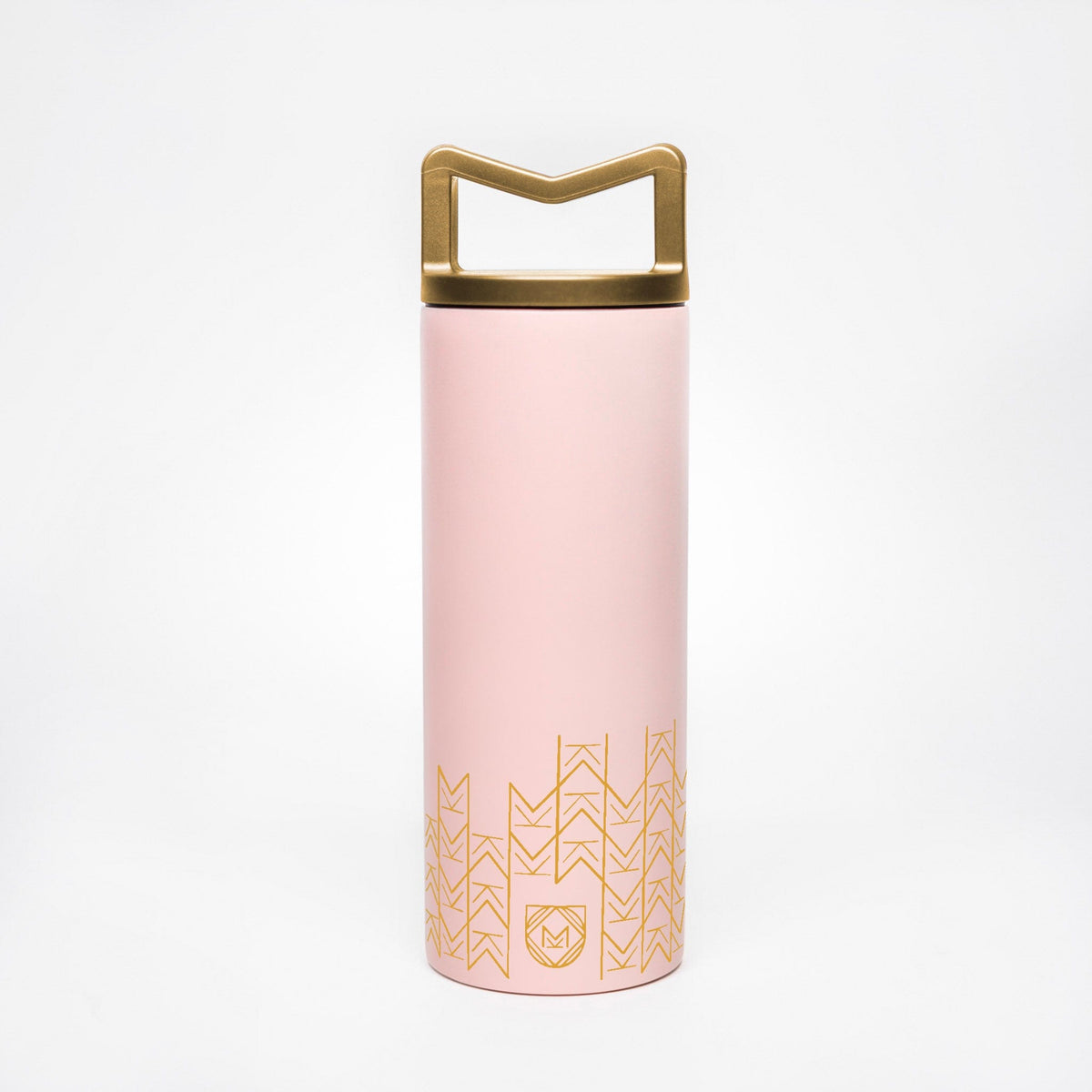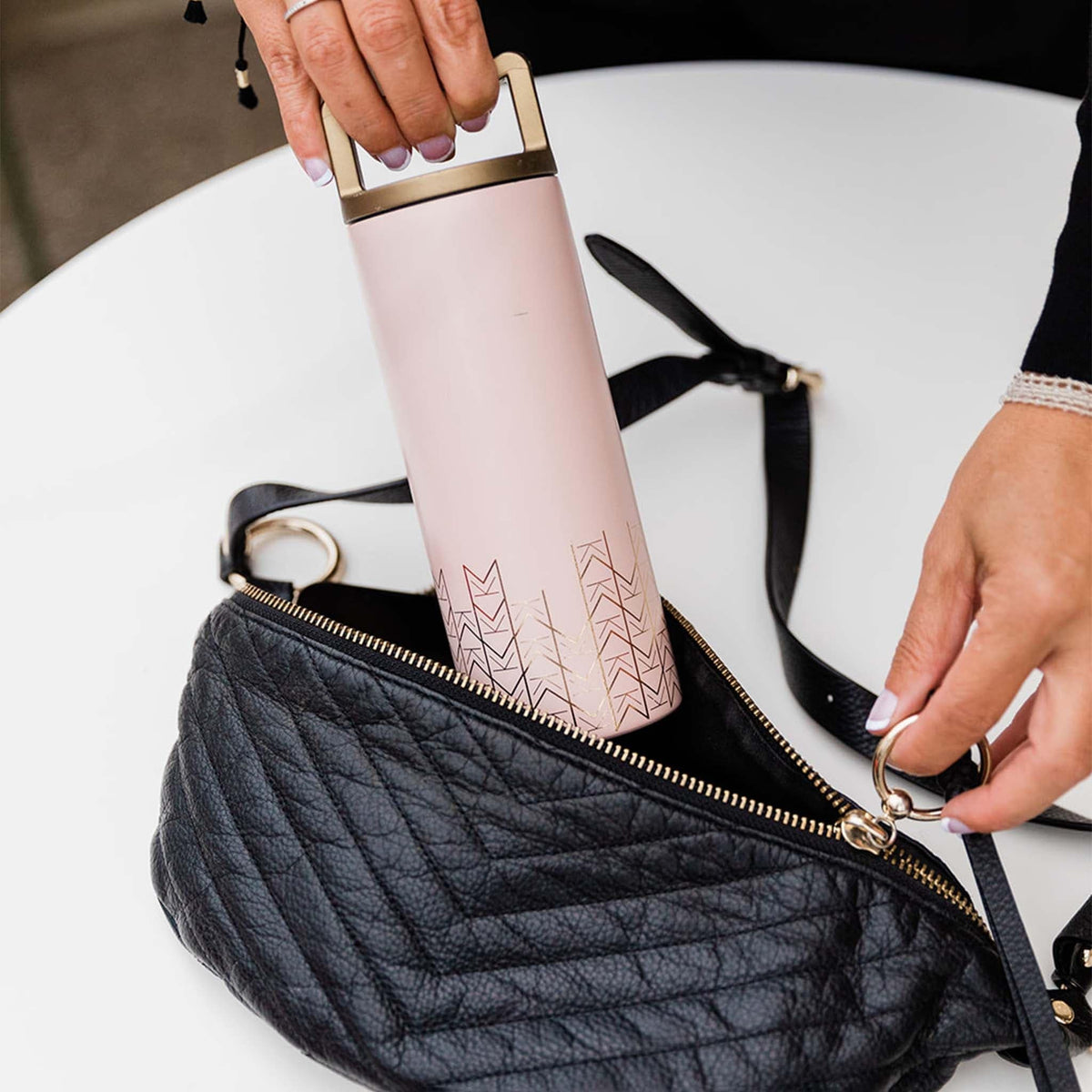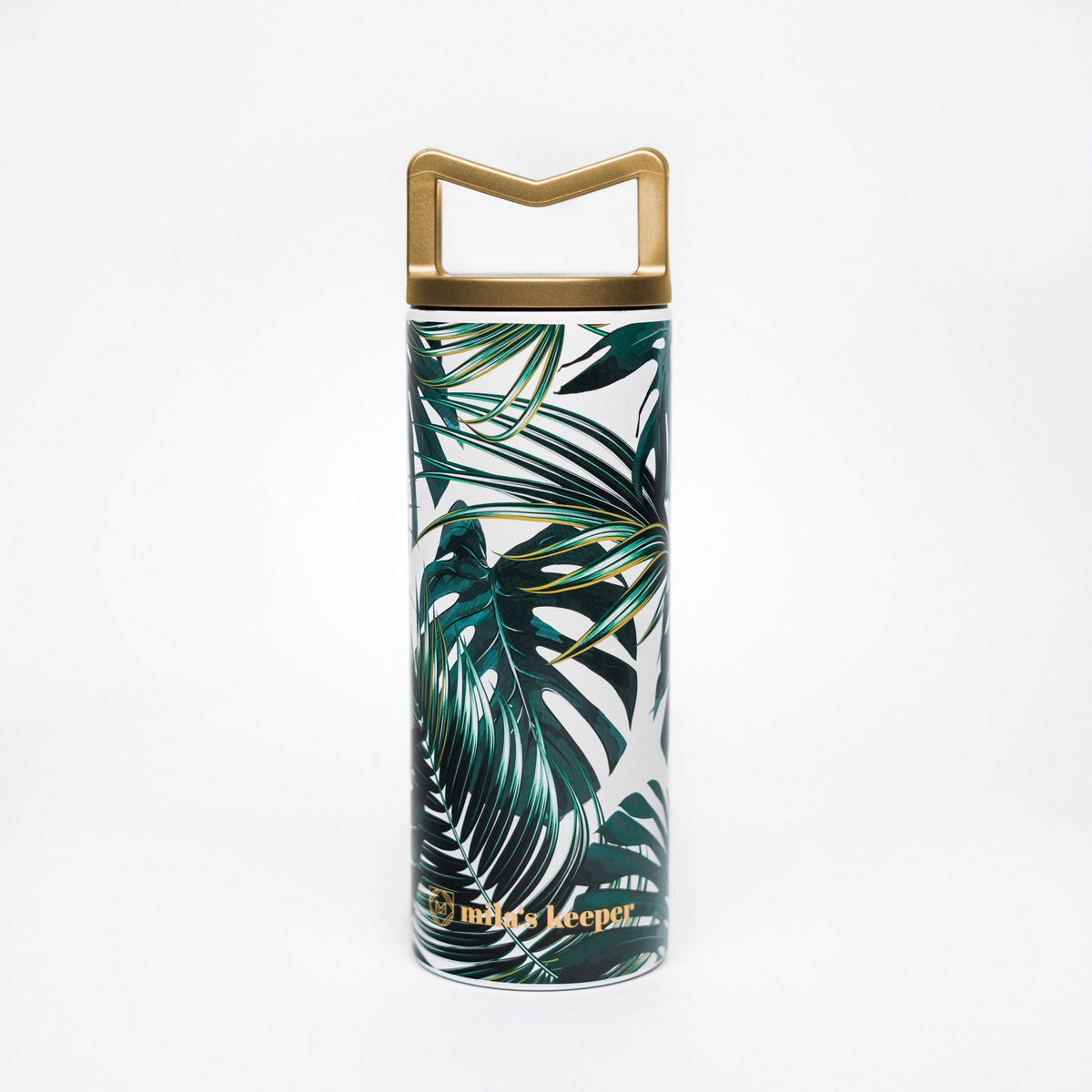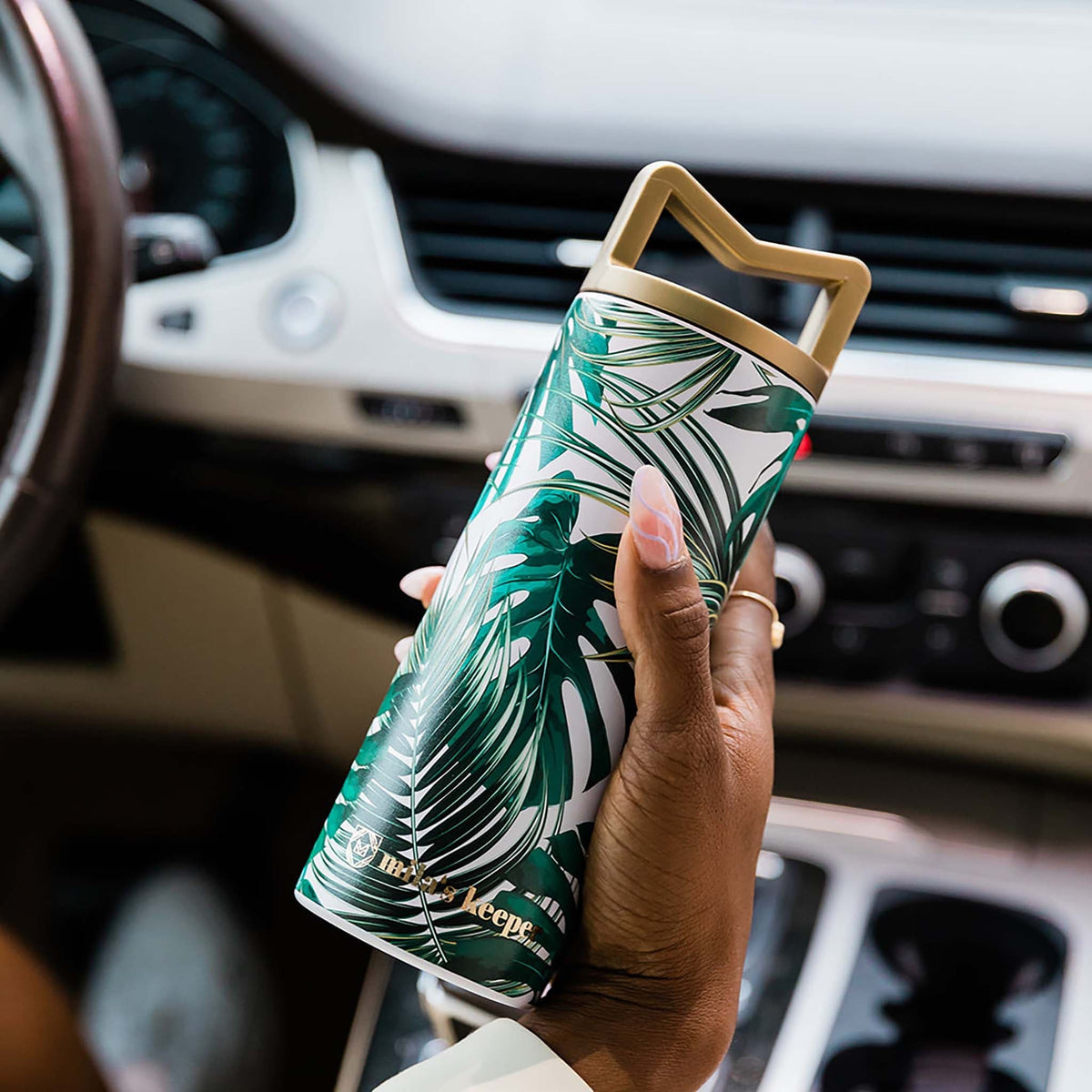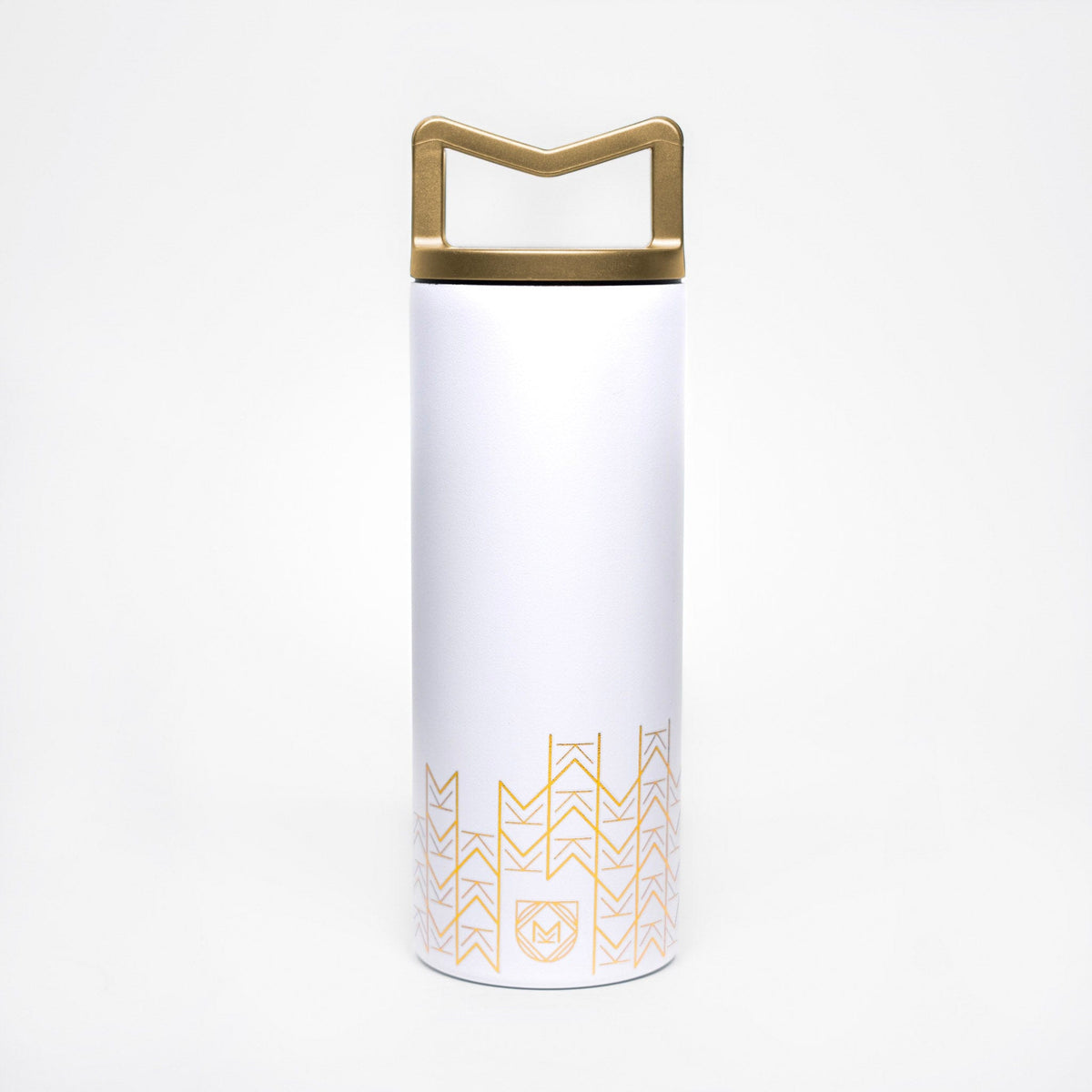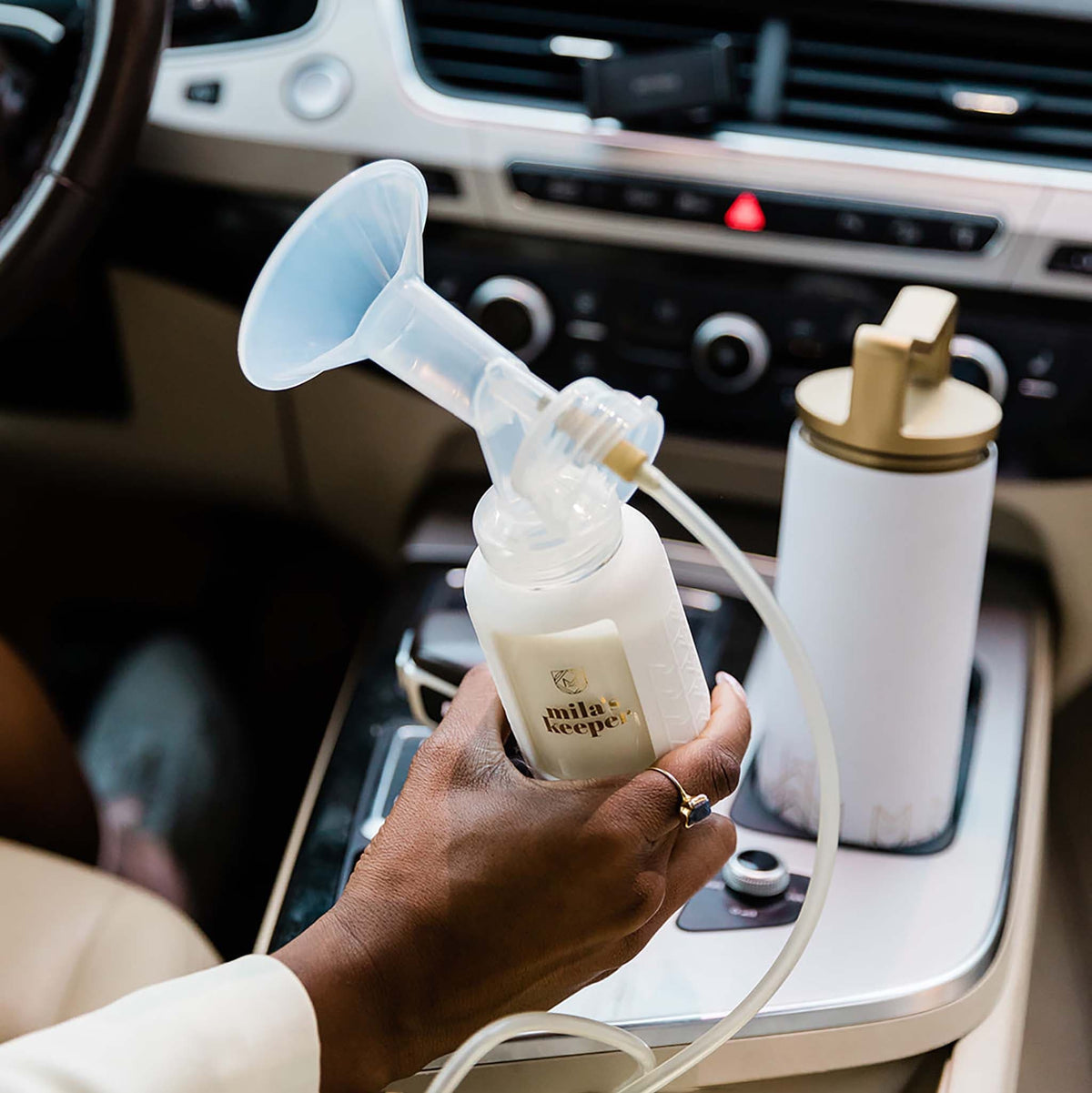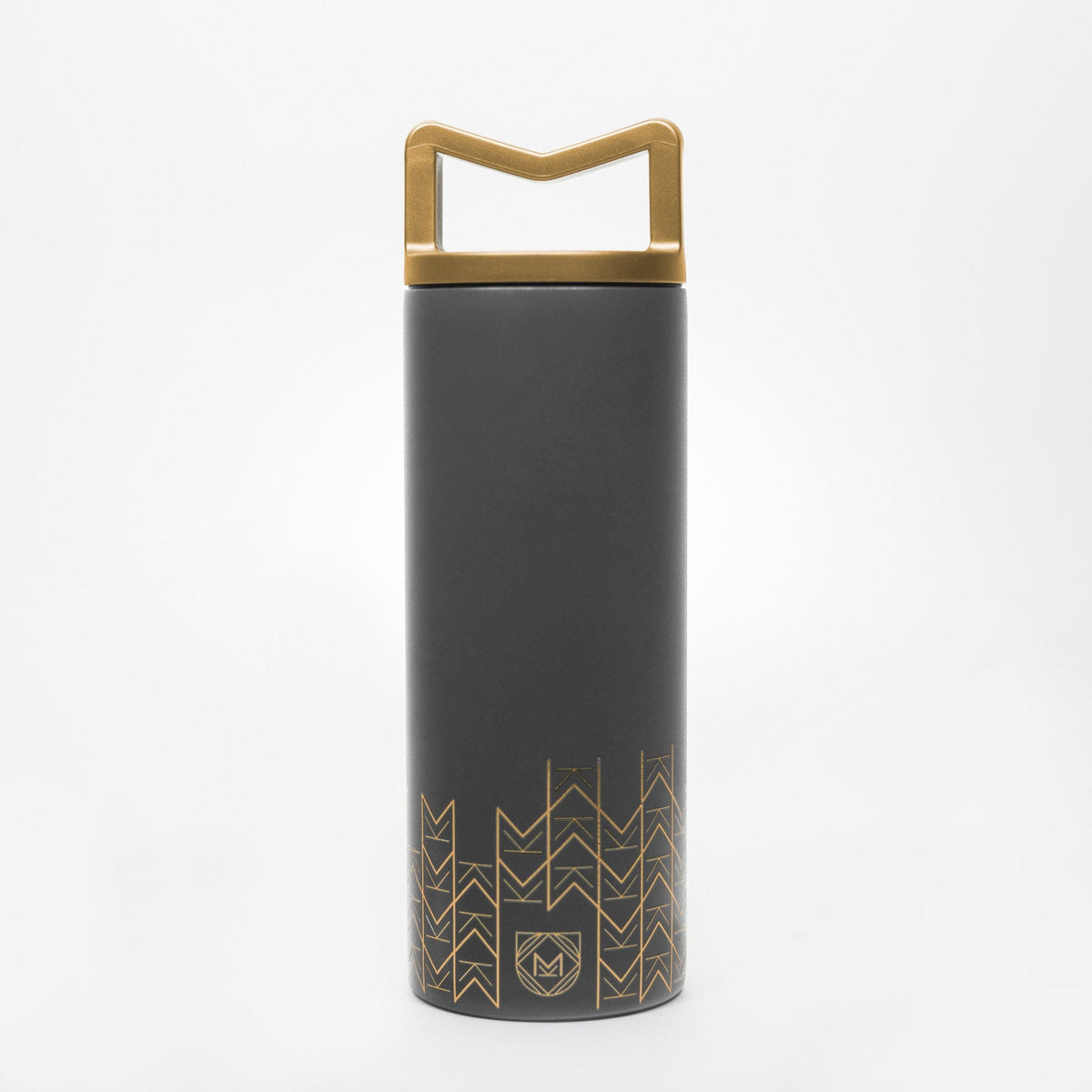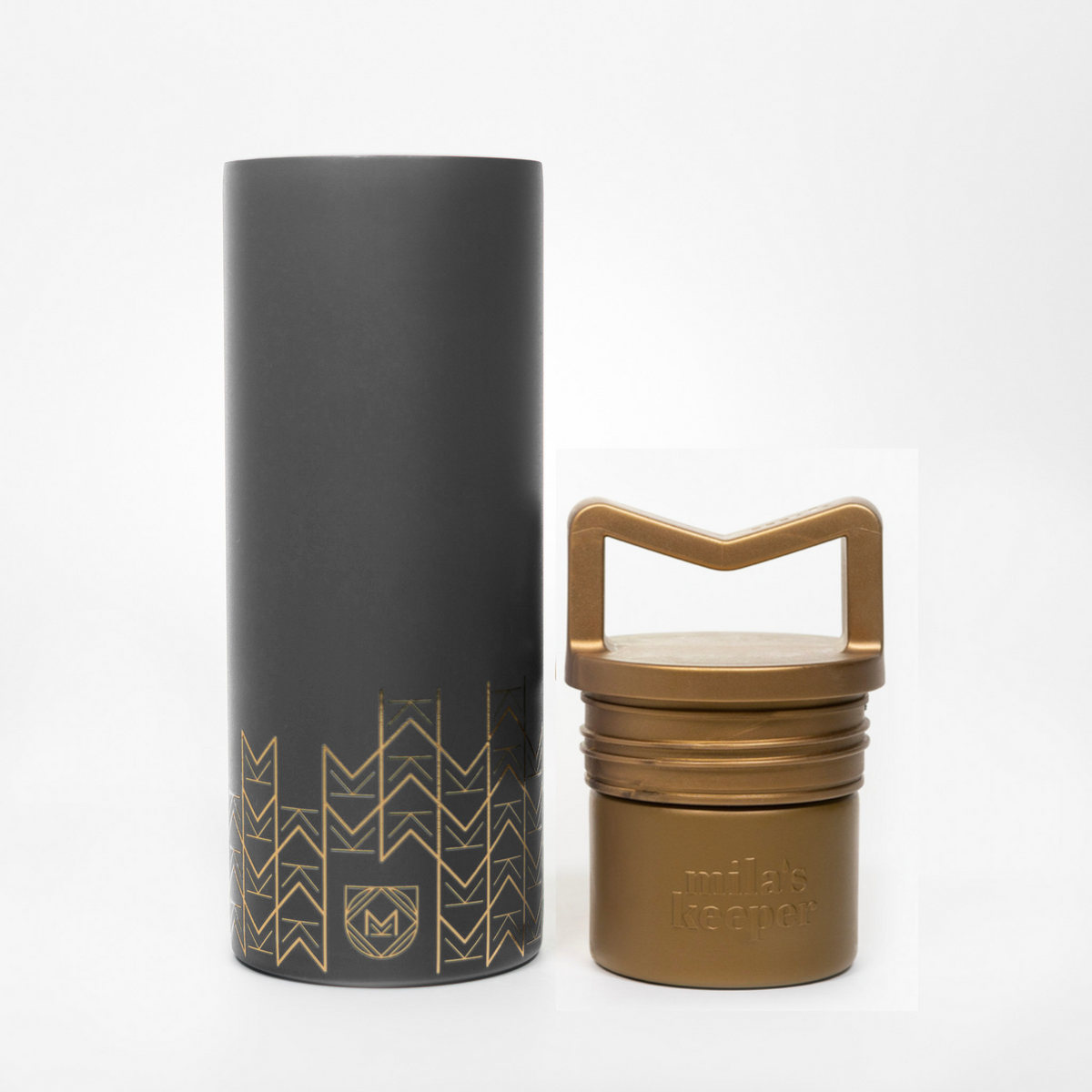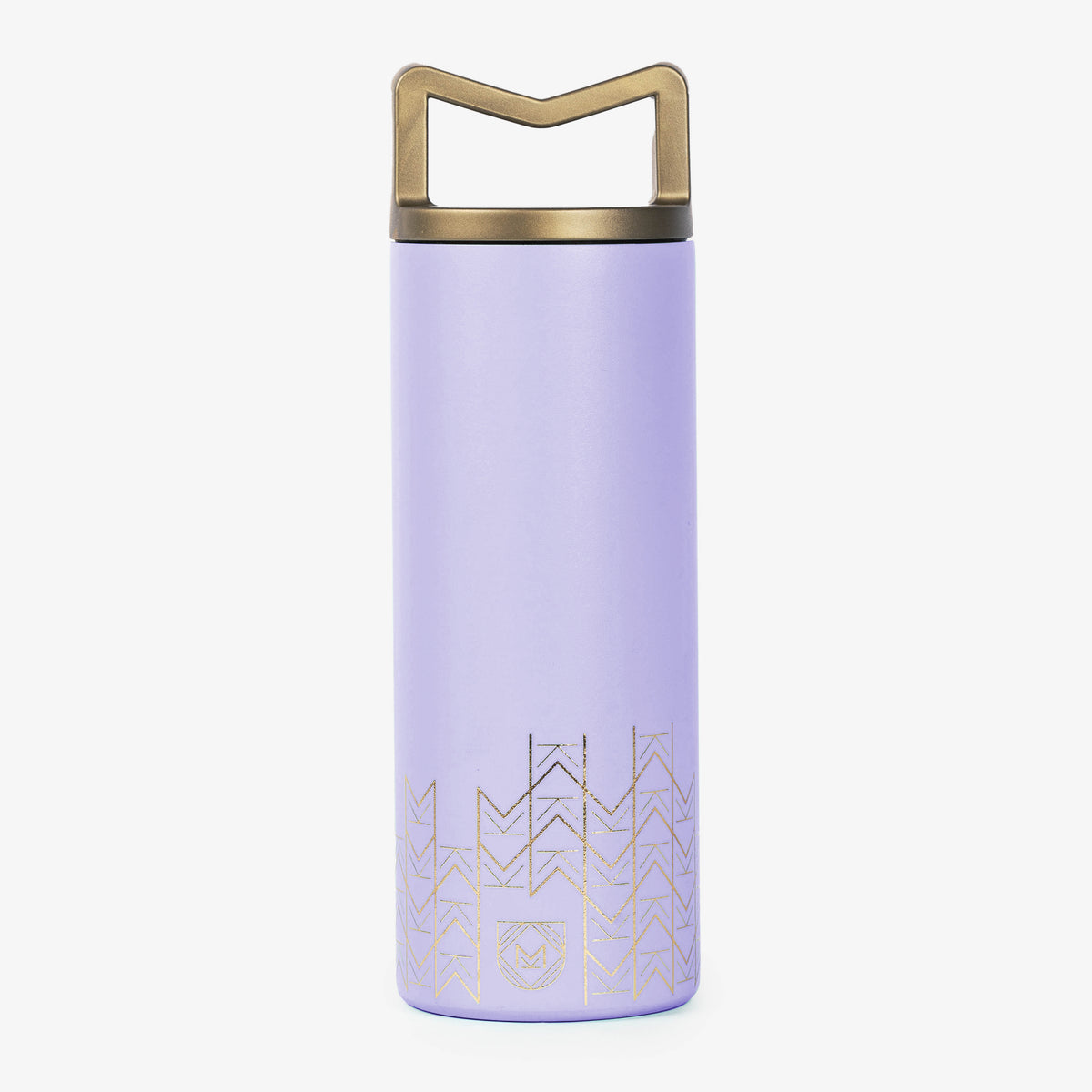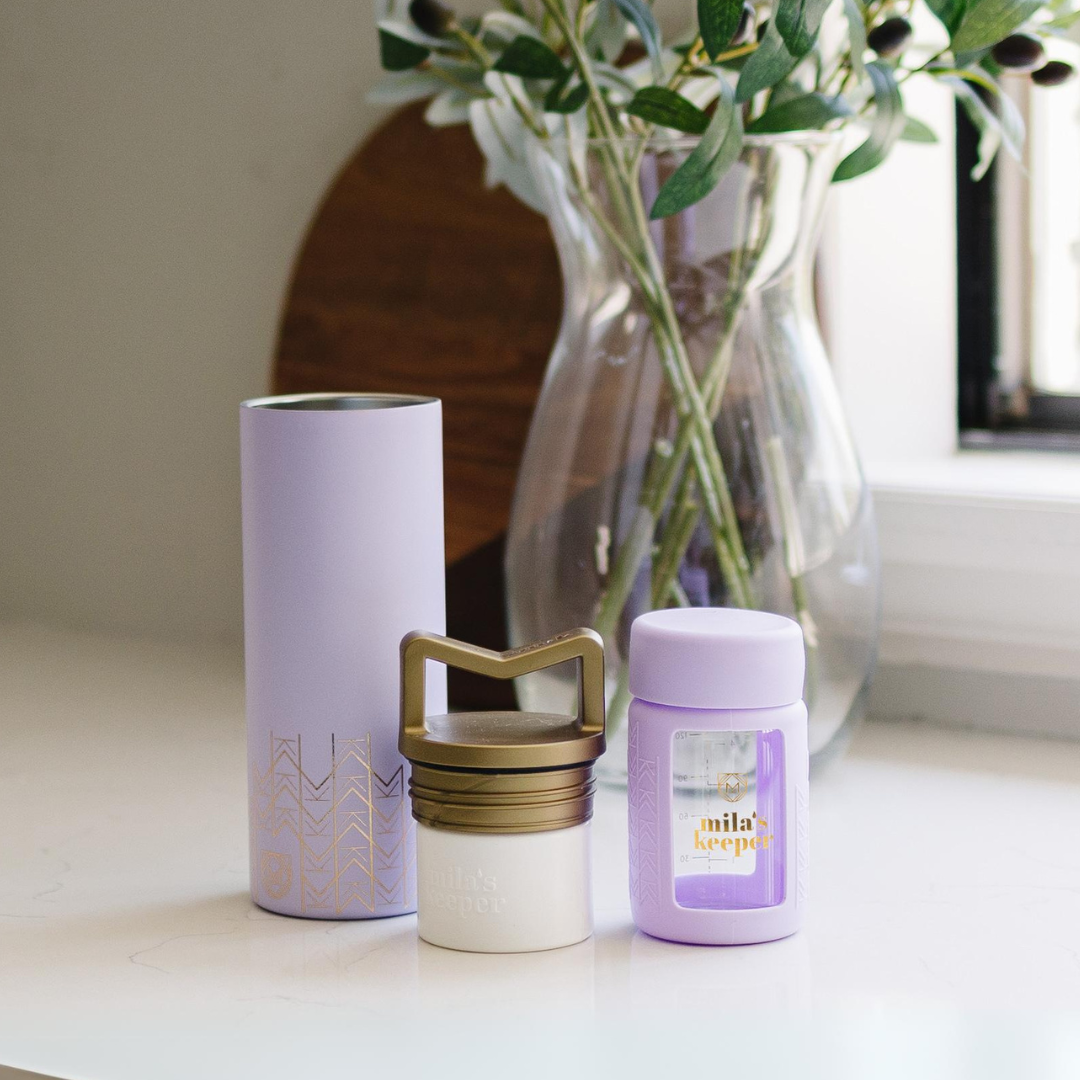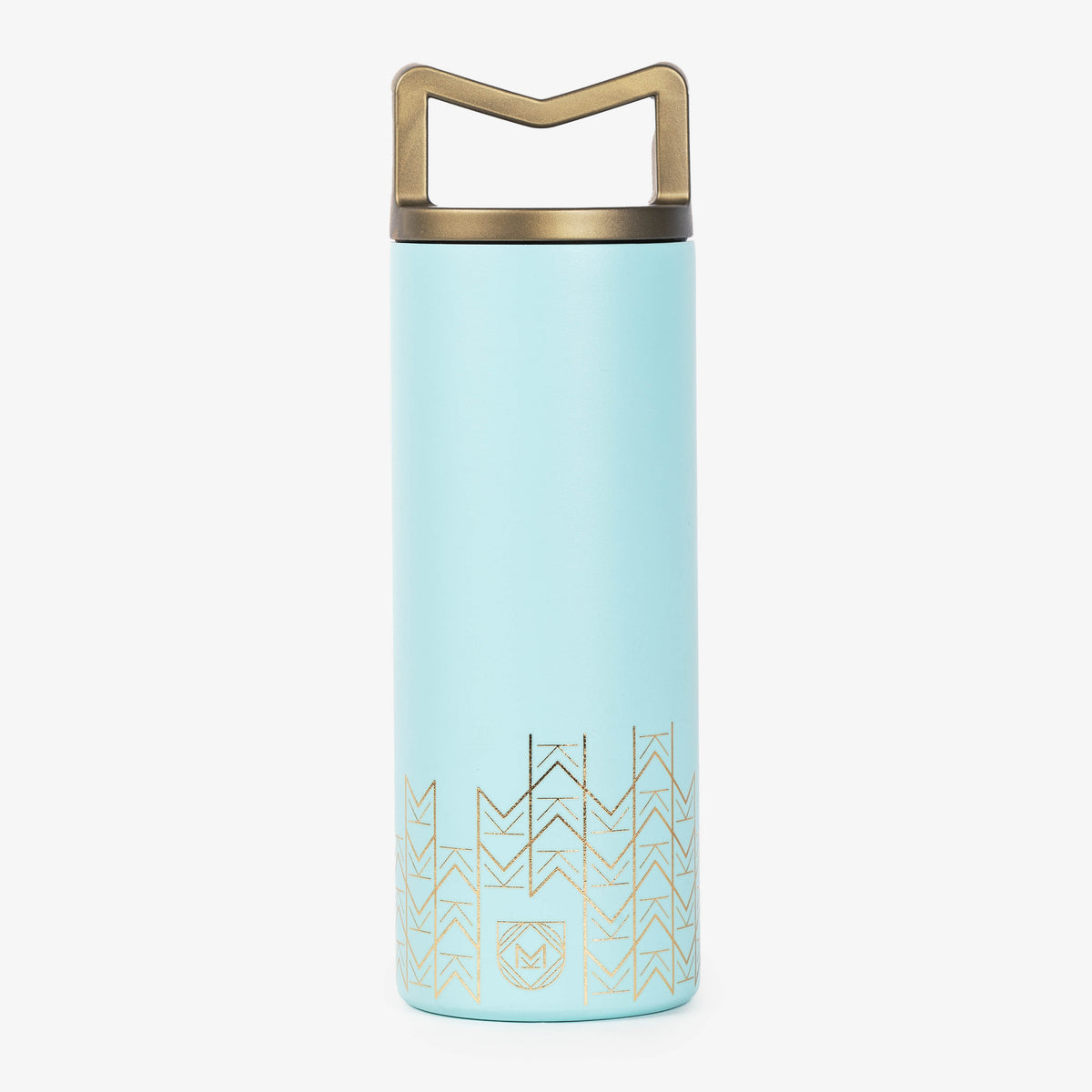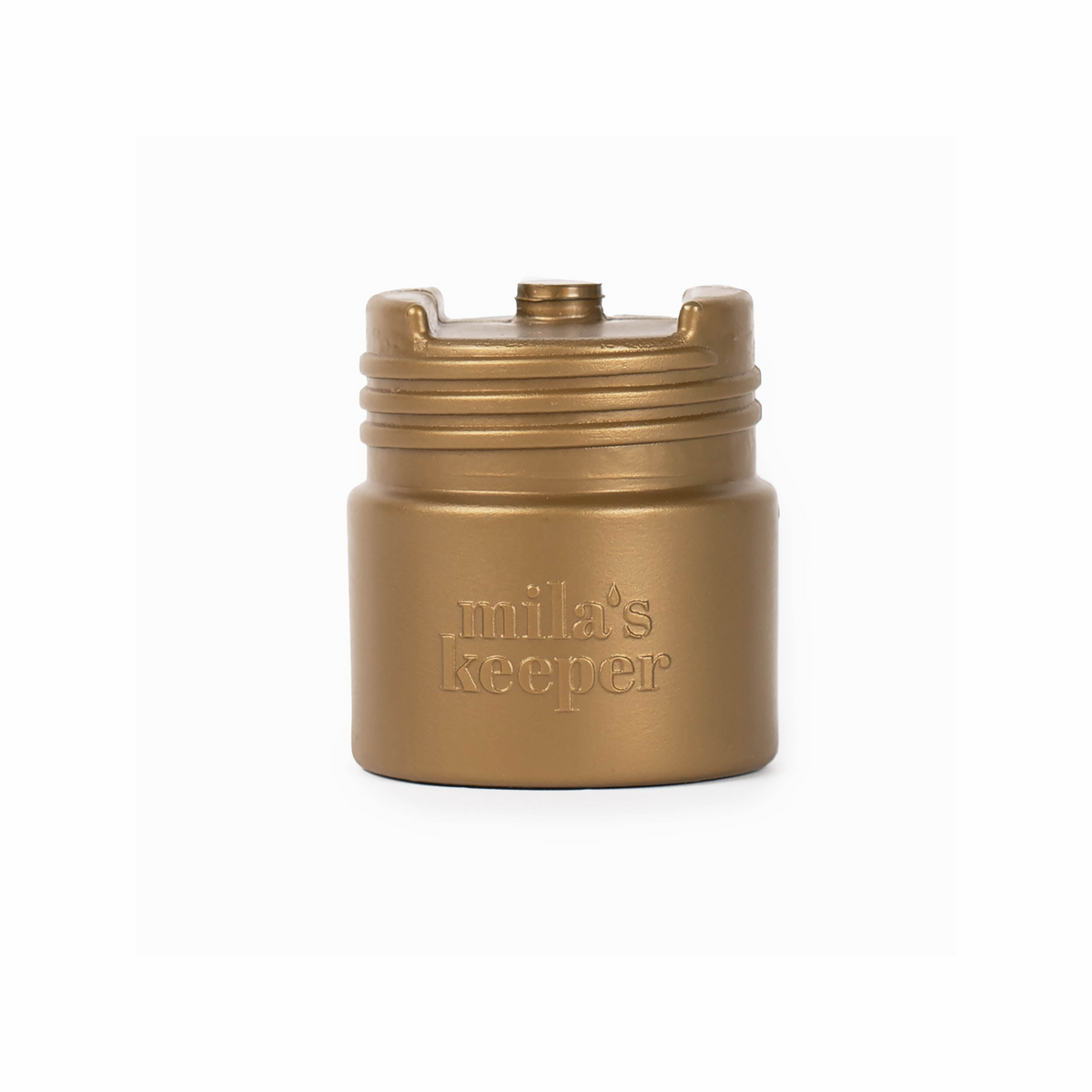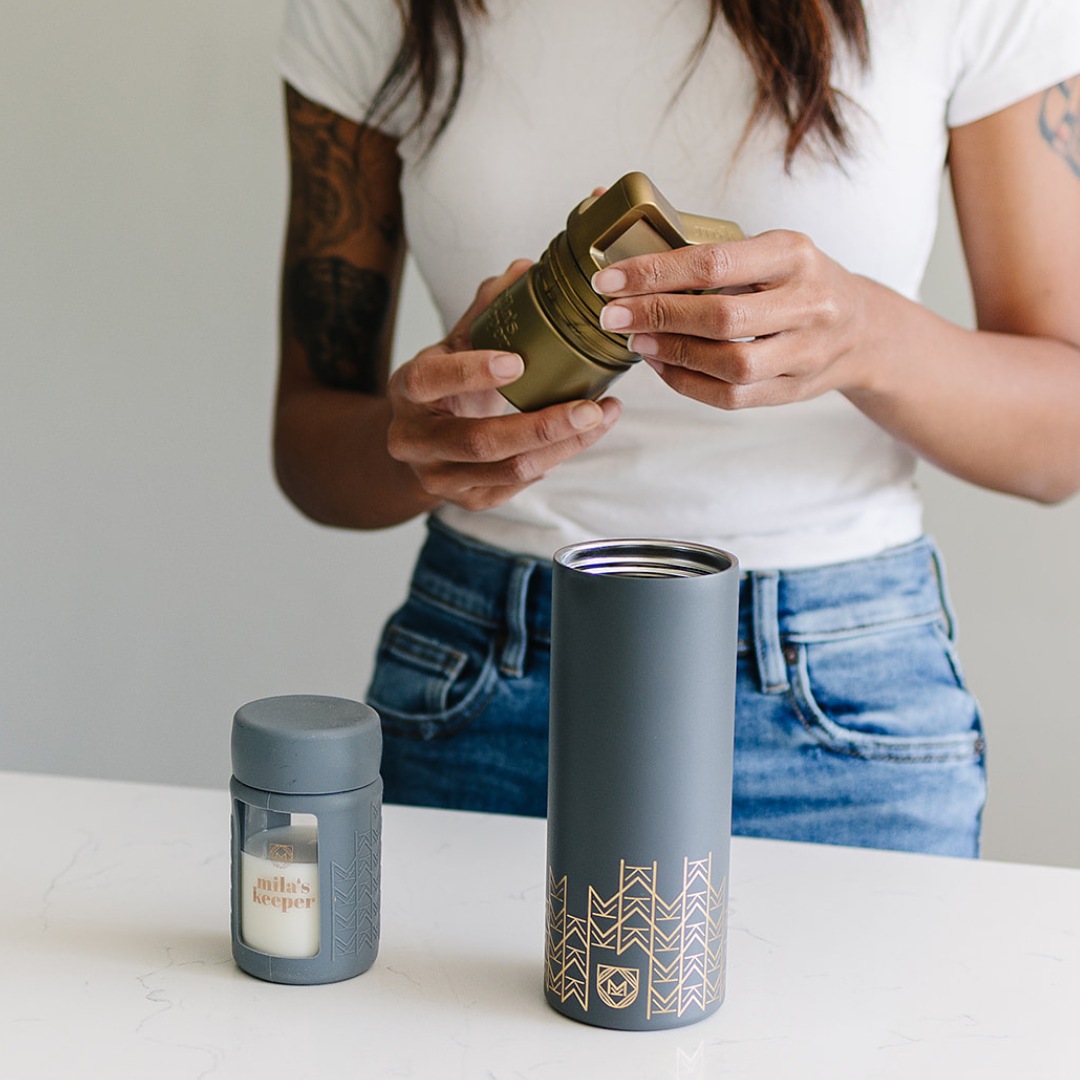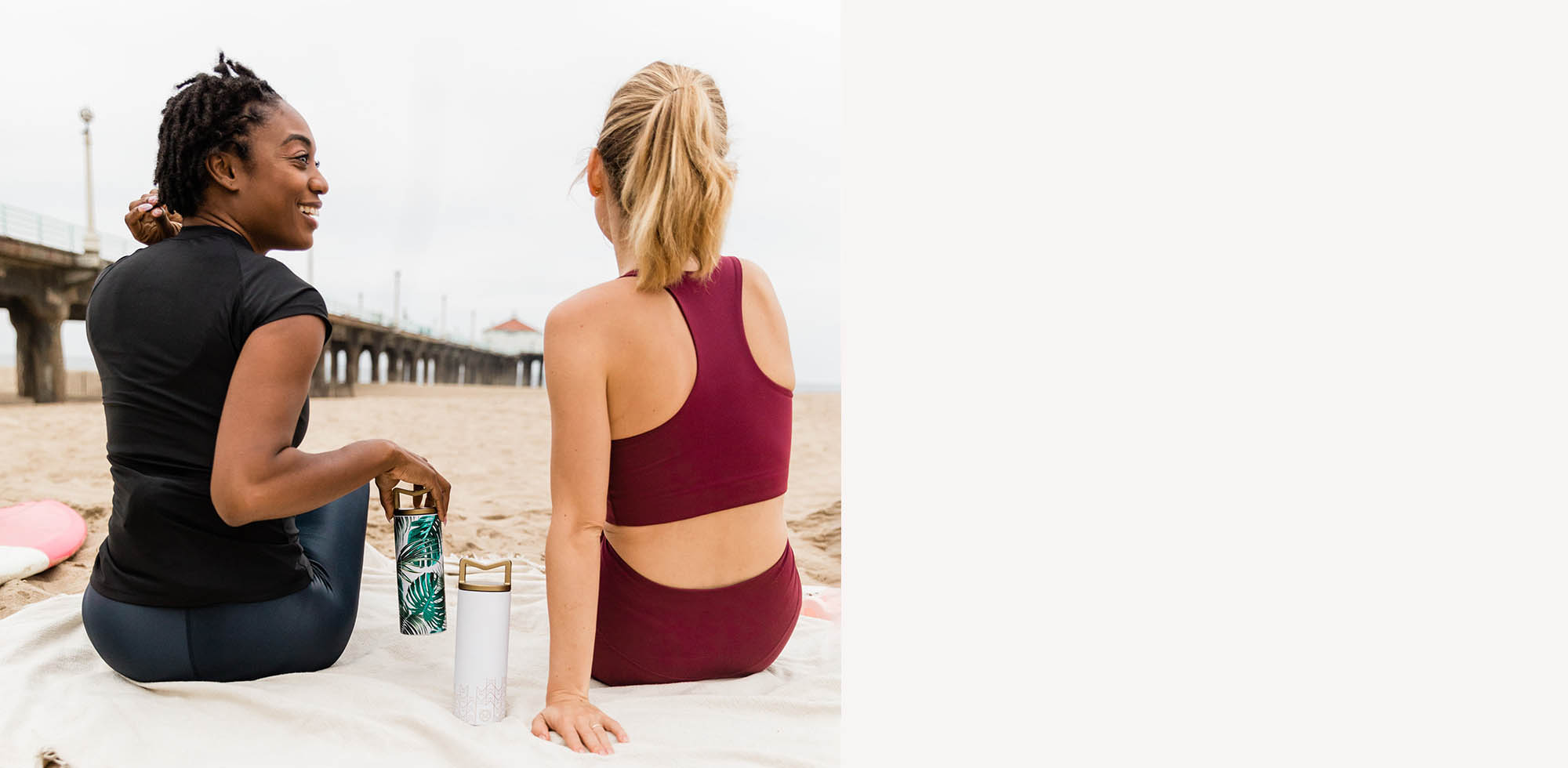Many people get tattoos to mark a significant life experience, to honor a loved one, or to celebrate a new chapter in life. Having a child certainly falls under these categories and is one of the top reasons for some people to get a tattoo.
You’ve probably seen parents proudly showing off their little one’s name inked on their arm, or maybe it’s their child’s birthdate or zodiac sign, or any number of trendy ways to commemorate the birth of a child.
With more women than men getting tattoos these days, and 41 percent of millennials with at least one tattoo, the topic of getting a tattoo while breastfeeding might come up more frequently than it once did.
You might find yourself wondering when it’s safe to get that tattoo you thought up the second you held your baby in your arms or the intertwining initials you were inspired to get while using our breast milk cooler. Or maybe you’re anxious to get a thumbprint heart tattoo while your kiddo’s fingers are still teeny-tiny.
Whatever it is, you’re itching to get to the tattoo shop but want to make sure you’re being safe about it- which is smart!
Can You Get a Tattoo While Breastfeeding?
While the decision of getting a tattoo while breastfeeding is a personal one that should be made in consultation with a healthcare professional, in general, most will advise against getting a tattoo while you’re breastfeeding.
Not only do the same risks associated with getting a tattoo for a non-breastfeeding person apply, but there are also some unknown risk factors for breastfeeding women. So like most things pregnancy and breastfeeding related, it’s always better to err on the side of caution.

Risks Associated with Tattoos and Breastfeeding
So now that we’ve burst your bubble, let’s talk about why exactly it’s recommended to wait until you’re done breastfeeding before getting a tattoo.
Tattooing involves the use of needles to puncture the skin and inject ink into the dermis layer of the skin. The dermis is the second layer of skin, which contains collagen and elastin fibers that give skin strength and elasticity. When a tattoo needle punctures the skin, it creates a wound that triggers an immune response, sending white blood cells to the area to remove foreign particles, such as the tattoo ink. However, the ink particles are too large to be completely removed, so they remain in the skin, becoming trapped in the collagen and elastin fibers. Over time, the body forms scar tissues around the ink particles, which helps to hold the ink in place, creating a permanent tattoo.
It’s commonly believed that ink particles are too big to enter breast milk during the tattooing procedure. Once injected into the skin, the ink remains trapped. However, it’s unclear if the ink can seep into breast milk as it gradually decomposes in the body over several months to years. If tattoo ink does get into breast milk, the potential effects it could have on an infant aren’t well understood.
Since there isn’t significant research on the effects of tattoo ink on breast milk, healthcare providers will typically recommend that women wait until they’re finished breastfeeding before getting a tattoo, as a precautionary measure.
The main concern of getting a tattoo while breastfeeding is the potential for infection, and transmitting that infection to the baby. Due to the use of needles, non-sterile techniques can lead to the transmission of blood-borne infections like HIV, which can potentially be transmitted to your baby through breast milk, and hepatitis, which can be passed on to your baby through breastfeeding if your nipples are cracked.
However, the risk of contracting HIV from getting a tattoo at a reputable shop is more theoretical and something the CDC doesn’t even have documented cases of happening. The more common risk is getting a bacterial infection, which can occur when bacteria or other microorganisms enter the skin through the tattoo needle or through improper aftercare of the tattooed area. When the skin is punctured during the tattooing process, it creates an open wound that can easily become infected if proper hygiene practices aren’t followed. This can lead to redness, swelling, pain, and even pus or discharge from the affected area. In severe cases, infections can spread throughout the body, leading to systemic symptoms such as fever, chills, and nausea.
Keep in mind that if you do come down with an infection, you may need to be put on medication. You’ll need to make sure that the medication to treat the infection is safe to be on while you’re breastfeeding and won’t interfere with your milk supply.
Let’s say you’ve decided to bypass the tattoo shop and you’re planning to DIY it or use a good friend with their own tattoo gun. The risk isn’t only in contracting something or getting an infection, you need to also think about what you’re putting into your body at the same time that your body is the main food source for a tiny human.
Even though tattoos are nothing new and are gaining in popularity, there are still many unanswered questions about the ingredients in ink and the associated risks. The European Union has recently banned certain pigments due to health risks, such as bladder cancer, but the US FDA doesn’t regulate tattoo inks. Researchers are working to understand more about tattoo ink, but they have encountered obstacles, including inaccuracies in ingredient labels. So even if you take the time to read an ingredient label (if there even is one), chances are it's not completely accurate. Researchers analyzing particle size and molecular composition of tattoo pigments have found the presence of unlisted ingredients in ink samples. In one case, the chemical analysis showed ethanol was present in a sample when it hadn’t been listed on the label. The researchers also suggested that small particles may harm cells while presenting their findings at a meeting of the American Chemical Society.
Another risk to take into account is that of an allergic reaction. Allergic reactions to tattoo ink can be debilitating and with lasting effects since it’s embedded in your skin. Allergic reactions can cause swelling, redness, and itching, and in severe cases, can lead to anaphylaxis. When we know that stress and pain can negatively affect your breast milk supply, it’s probably best to avoid a situation that could lead to an uncomfortable and ongoing allergic reaction while you're breastfeeding.
So while you may be feeling really inspired to mark this life-changing experience right after the birth of your child, it’s important that you make an informed decision about getting a tattoo while you’re still breastfeeding. Like most things related to pregnancy and breastfeeding, you’re going to want to do your own research and speak to your doctor about breastfeeding and tattoos before deciding to take action.

Safety Precautions When Getting a Tattoo After Pregnancy
If you’ve done your research and spoken with your healthcare provider and feel that you want to move forward with getting a tattoo while you’re still breastfeeding, how can you safely do so? Here are a few things to keep in mind:
- Choose a reputable tattoo artist who uses sterile equipment and follows proper hygiene practices.
- Ensure that the tattoo artist wears gloves throughout the entire process.
- Make sure that all needles and tubes used during the tattooing process are single-use, sterile, and opened in front of you.
- Ask the tattoo artist about their sterilization process for reusable equipment, such as tattoo machines and grips.
- Check that the tattoo parlor is clean, well-lit, and well-ventilated.
- Avoid getting a tattoo if you have a compromised immune system, skin infections, or other health issues.
- Be sure that you understand the aftercare instructions provided by the tattoo artist and follow them to prevent infections and promote proper healing.
Recommendations for Breastfeeding Moms Who Want to Get a Tattoo
Since most reputable tattooists won’t knowingly tattoo pregnant or breastfeeding women, you’ll have to spend some time looking into the right place to get it done.
To minimize the risk of transmitting a blood-borne infection like HIV or hepatitis, it’s important to choose a trustworthy tattoo artist who adheres to proper safety measures. If your state registers tattoo artists, ensure that the artist you choose is registered. Make sure they wear gloves throughout the procedure, and have access to an autoclave to sterilize their equipment. Check out the work area- it should be clean, and all needles used should be new, disposable, and for single use only. Sterile, unopened dressings and ink should be used for the tattoo. Additionally, the artist should be available for the first 24 hours after the procedure in case of any issues, and it’s worth inquiring about their availability for support in the days and months following the procedure.
Maybe you can come up with an alternative to getting permanently inked while you're breastfeeding. Or just take an extra beat to make sure you’re getting something you really want.
Perhaps instead of going all in and getting the tattoo while you’re still breastfeeding, consider first getting a henna tattoo to satisfy the need to do it (and for a little trial period). You’ll just want to be sure to use natural henna as opposed to black henna, which should be avoided while breastfeeding because of the chemicals it’s mixed with. Henna tattoos are relatively simple and non-invasive. Henna paste is made by crushing the leaves of the henna plant into a fine powder, then mixing the powder with other natural ingredients such as lemon juice, sugar, and essential oils.
A henna artist will apply the paste to your skin using a cone-shaped applicator or a small brush. The paste is typically applied in a thin layer, following the lines of the design. Once the henna paste has been applied, you need to wait for it to dry. The drying process can take anywhere from 30 minutes to several hours, depending on the thickness of the paste and the humidity in the air. After the paste has dried, the henna artist will remove it by gently scraping it off with a tool or rubbing it off with a cloth. When properly taken care of, a henna tattoo can last 2 to 3 weeks.

What About Getting a Tattoo While Pregnant?
Archaeologists have found evidence that tattoos have been part of the human experience for thousands of years. In fact, female mummies dated back to c. 2000 B.C. have tattoo markings that some archaeologists believe had a therapeutic purpose and functioned as a permanent amulet during pregnancy and birth. The tattoos were largely distributed around the abdomen, thighs, and breasts and had specific designs, such as net-like dots on the abdomen and figures of the household deity Bes (the protector of women in labor) on the thighs. These designs suggest that the tattoos were meant to expand protectively during pregnancy and to safeguard the actual birth, making tattoos a purely female custom.
What was once considered to be protective and safe, is now considered to be risky and potentially harmful. The risks associated with getting a tattoo can be exacerbated by pregnancy and it is widely recommended that pregnant women not get a tattoo. The main concern, again, is the risk of infection. Pregnant women are more susceptible to infections due to a weakened immune system, which makes them more vulnerable to bacterial and viral infections. If a pregnant woman were to contract an infection from a tattoo, it could harm the developing fetus and potentially lead to complications such as premature birth, low birth weight, or even miscarriage. There’s also a risk that the chemicals in the dye may affect fetal development during the first 12 weeks. The risks and effects on the baby for the remainder of the pregnancy are unknown, but tattoo ink contains a variety of ingredients, including heavy metals, such as lead and cadmium, that can be harmful to both the mother and the developing fetus. Some studies have suggested that exposure to these chemicals during pregnancy can lead to developmental delays, cognitive impairments, and behavioral problems in children.
There’s also the risk of an allergic reaction to the tattoo ink. While an allergic reaction could be problematic while you’re breastfeeding, it could add another layer of discomfort during your pregnancy- and who wants that?
For the women who already have a tattoo and are curious how it affects pregnancy, if at all, there isn’t much data to suggest it’s harmful. Some women with back tattoos are concerned that having a back tattoo could prevent them from receiving an epidural because of the location, but few studies have been conducted on this issue, and most anesthesiologists have no problem administering epidurals to women with back tattoos. However, it’s recommended to check with hospital policy beforehand, especially if it’s a recent addition and is still healing.
If you’re somebody that previously had a tattoo and you're watching it change into an unrecognizable figure during your pregnancy, don’t rush off to make an appointment to remove it just yet. The American Medical Association advises against exposing your body to lasers or harmful chemicals during pregnancy, which are commonly used in tattoo removal procedures and creams. As a result, if you're considering getting a tattoo removed, it’s recommended that you wait until after giving birth to do so. You should probably also wait until you’re done breastfeeding for this too, since there isn’t enough data to determine whether or not the process is harmful to a nursing infant. So just let it be for now, and try to enjoy and appreciate all the changes your body’s going through during this time. Besides, you could use your metamorphosed tattoo as a Rorschach test when your baby is a toddler.
So for all the mamas out there who are ready to go get a tattoo in honor of your new precious one, skip the ink for now and take it easy on your body during this time, there’s no need to put it through any extra pain or trauma.
More Breastfeeding Tips from Mila's Keeper!
Keep Reading related blog: 10 Facts About the Dangers of Plastic to Moms and Babies
--
A female-designed and female-run company, Mila's Keeper is on a mission to empower women to thrive during their breastfeeding journey by offering reusable, eco-friendly breast milk storage solutions for their day-to-day needs. Get the latest tips and info on Mila's Keeper products by following us on Facebook, Twitter, Instagram, Pinterest, and LinkedIn.

